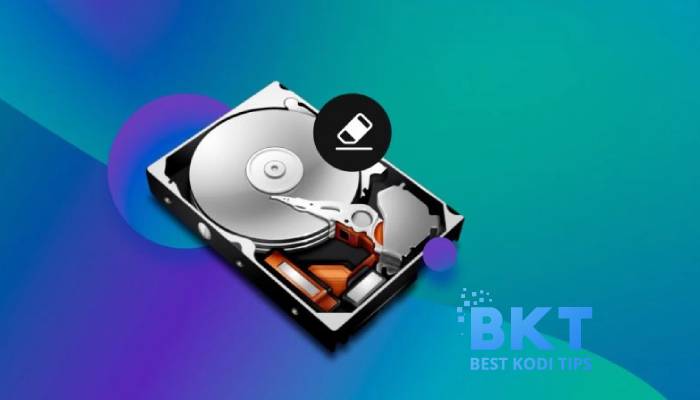A hard drive is a computer data storage device to stores and then retrieves digital information on a device. It consists of one or more magnetic disks, or platters, that spin rapidly while an arm with a read/write head moves across them. This head reads and writes data to the platters, allowing the storage and retrieval of files.
Hard drives are non-volatile, retaining data even when powered off. They provide long-term storage for the operating system, software, and user files. Hard drives come in various capacities, with higher capabilities offering more storage space for documents, media, and applications.
Reasons for Dead or Damaged Hard Drives
Hard drives can become dead or damaged due to various reasons. Here are some common causes:
Mechanical Failure
Hard drives have moving parts, including a spinning disk and a read/write head. Mechanical failures can occur when these components wear out over time or due to physical shocks (such as dropping the hard drive). It can result in the inability of the drive to function correctly.
Head Crash
If the read/write head of the hard drive comes into contact with the platter (the spinning disk where data is stored), it can cause a head crash. This physical contact can damage the platter and lead to data loss.
Electrical Failure
Power surges, faulty power supplies, or other electrical issues can damage the electronic components of a hard drive, rendering it non-functional.
Firmware Corruption
The firmware on a hard drive is responsible for controlling its operations. If the firmware becomes corrupted, it can lead to various issues, including the drive’s failure.
Logical Errors
File system corruption, software errors, or issues with the operating system can lead to logical fallacies on the hard drive. These errors may prevent the system from accessing or reading data correctly.
Overheating
Excessive heat can damage the electronic components of a hard drive. Poor ventilation or cooling issues within the computer system can contribute to overheating.
Age of Hard Drive
Hard drives have a limited lifespan like any other mechanical or electronic device. Over time, the components can wear out, reducing the drive’s reliability.
Manufacturing Defects
In rare cases, hard drives may have manufacturing defects that become apparent over time. These defects can lead to failures or malfunctions.
Virus or Malware
Malicious software can infect a computer system and cause damage to the hard drive by corrupting files, modifying the file system, or even physically damaging the drive.
User Mistakes
Accidental deletion of important files, improper shutdowns, or other user errors can contribute to data loss or drive damage.
It’s important to note that regular backups can help mitigate the impact of data loss in the event of a hard drive failure. Additionally, taking preventive measures such as using surge protectors, maintaining proper ventilation, and handling hardware with care can help extend the lifespan of a hard drive.
How to do hard drive recovery?
Hard drive recovery involves restoring lost or inaccessible data from a damaged or failing hard drive. Here’s a general guide on how to attempt hard drive recovery:
Stop Using the Drive
Once you realize an issue, stop using the hard drive immediately to prevent further damage.
Continued use may overwrite existing data, making recovery more challenging.
Identify the Cause
Determine whether the issue is due to logical errors (like accidental deletion or formatting) or physical damage.
Software-Based Recovery for Logical Issues
- Use data recovery software like Recuva, EaseUS Data Recovery Wizard, or Disk Drill.
- Install the software on a different drive to avoid overwriting data on the problematic one.
- Follow the software instructions to scan for and recover lost files.
Professional Data Recovery Services for Physical Issues
Consider professional data recovery services if the hard drive has physical damage (e.g., clicking sounds, not spinning).
Companies like Ontrack, DriveSavers, or local specialists may be able to recover data from physically damaged drives in a cleanroom environment.
Check Backup Sources
If you have a backup, restore your data from the backup source. Regular backups are crucial for preventing data loss.
Use a Live CD or External Enclosure
Boot your computer from a live CD or connect the problematic hard drive to another computer using an external enclosure.
This allows you to access the drive without booting from it, facilitating data recovery.
Attempt DIY Fixes for Mild Physical Issues
Some mild physical issues may be resolved temporarily by cooling the drive or applying slight pressure.
These are temporary solutions; professional intervention is recommended for severe physical damage.
Check for File System Errors
Use built-in tools like CHKDSK (Windows) or Disk Utility (Mac) to check and fix file system errors.
This applies to cases where the issue is related to logical errors in the file system.
Clone the Drive
Before attempting any recovery, consider cloning the damaged drive to prevent further damage during the recovery process.
Tools like DDRrescue or Clonezilla can help create a bit-by-bit copy of the drive.
Remember, data recovery success depends on the nature and extent of the damage. If in doubt or dealing with critical data, seek professional assistance to avoid further complications. Regular backups are the best prevention against data loss.
How to Back up data from a hard drive?
Backing up data from a hard drive is crucial in preventing data loss. Here’s a guide on how to backup from a hard drive:
Choose a Backup Destination
Select an external hard drive, network-attached storage (NAS), or cloud storage service as your backup destination.
Select a Backup Method
Manual Backup
Copy and paste files manually to the backup destination.
Automatic Backup
- Use built-in backup tools or third-party software to schedule automatic backups.
Built-in Backup Tools for Hard Drive Recovery
Windows
Use File History (Windows 8.1 and 10) or Backup and Restore (Windows 7).
Mac
Utilize Time Machine for automatic backups.
Third-Party Hard Drive Backup Software
Consider using dedicated backup software like:
- Acronis True Image
- EaseUS Todo Backup
- Backblaze
- Carbonite
Cloud Backup Services
Utilize cloud storage services for automatic backups:
- Google Drive
- Microsoft OneDrive
- Dropbox
- Apple iCloud
External Hard Drive Backup
- Connect an external hard drive.
- Copy essential files manually or use backup software.
Network-Attached Storage (NAS)
- Set up a NAS device on your local network.
- Configure automatic backups to the NAS using built-in tools or third-party software.
Create Backup Plan
- Define what data to back up. It could include documents, photos, videos, and essential system files.
- Establish a backup schedule based on your needs (daily, weekly, etc.).
Encryption and Security
- If storing sensitive data, consider encrypting your backups for added security.
Test Your Backups
- Periodically check your backup files to ensure they are accessible and complete.
- Test the restoration process to confirm that your backup is functional.
Offsite Backup
- Store a copy of your backup offsite to protect against physical damage or theft.
- Cloud services provide automatic offsite backup.
Backup Entire System (Disk Image)
- Some backup tools allow the creation of a complete image of your hard drive, enabling faster system recovery.
Monitor Backup Health
- Regularly check the status of your backups for any errors or warnings.
Consider Versioning
- Use backup solutions that support versioning, allowing you to revert to a previous file version.
Document Your Backup Strategy
- Keep a record of your backup plan, including schedules and the location of backup files.















Comments